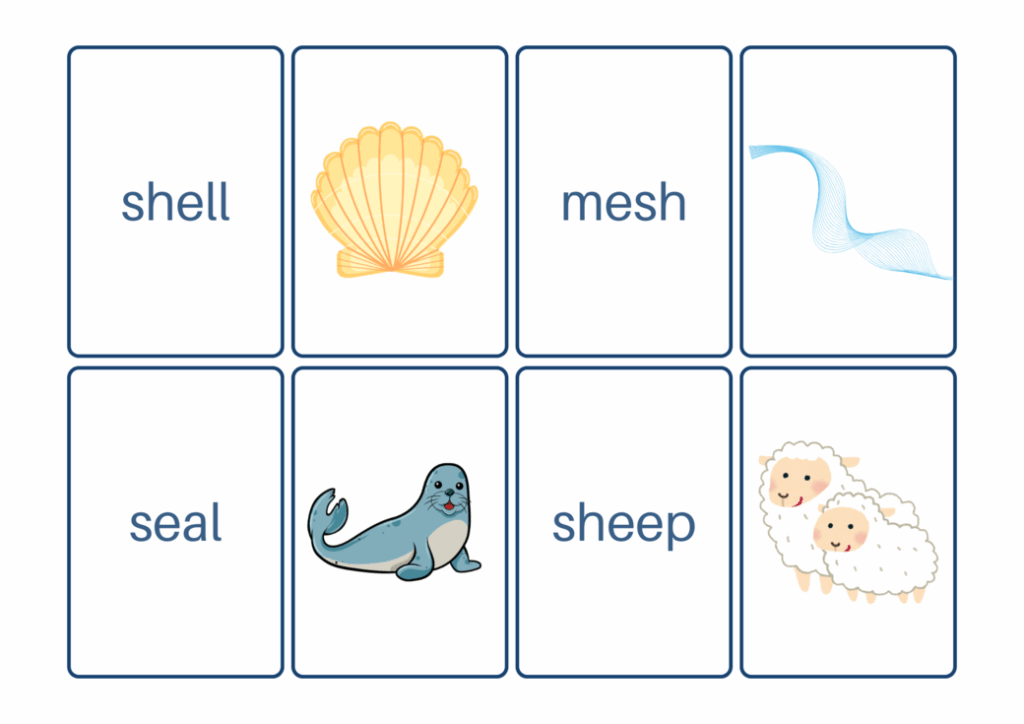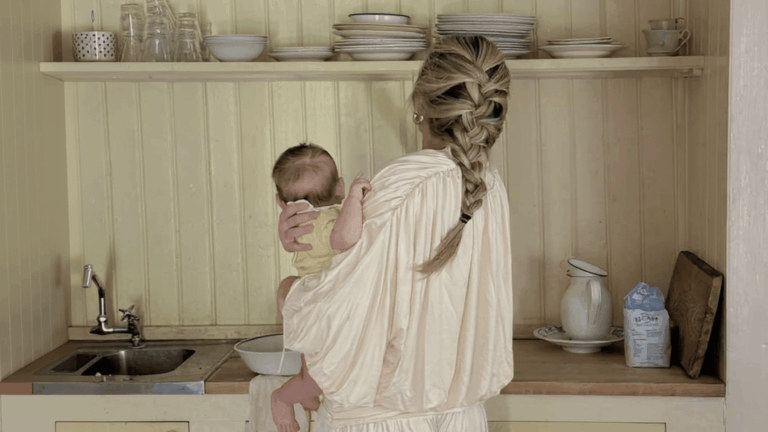Many English learners struggle with similar sounds that completely change word meanings.
The difference between “sip” and “ship” might seem small, but mispronouncing these sounds can lead to serious misunderstandings.
Students often find themselves confused when native speakers can’t understand what they’re trying to say, even though their grammar is perfect.
Mastering s and sh minimal pairs doesn’t have to be frustrating or boring. There are simple, fun methods that make learning these tricky sounds much easier.
This blog will show you practical techniques to master the S-SH sound pair. You’ll learn why these sounds matter so much, plus get hands-on exercises that actually work. By the end, you’ll speak with confidence and clarity.
Understanding the Articulation of S vs. SH
The S and SH sounds differ in where the tongue touches inside the mouth.
For the S sound, speakers place their tongue tip near the ridge behind their front teeth. This creates a sharp, hissing sound. The lips stay relaxed and slightly apart.
The SH sound requires a different tongue position. Speakers pull their tongue back slightly and curve it more. The lips round forward into a small circle. This creates a softer, whooshing sound.
When listening, people can notice key differences. The S sound feels sharper and more focused.
It cuts through other sounds clearly. The SH sound feels broader and softer. It has a gentle, flowing quality that seems to spread in the mouth.
Practice helps speakers feel these positions and hear the distinct qualities of each sound.
Real-Life Examples of S and SH Mix-Ups
English learners often struggle with the s and sh minimal pairs in everyday conversations.
These mix-ups can lead to funny or confusing moments. Understanding common problem words helps speakers avoid embarrassing situations.
Common Word Pairs That Cause Confusion:
- Sip/ship – “I want to sip my coffee” vs. “The ship sailed away”
- bus/bush – “Wait for the bus” vs. “Hide behind the bush”
- see/she – “I can see you” vs. “She is my friend”
- sue/shoe – “Sue is nice” vs. “My shoe is tight”
- mass/mash – “Mass of people” vs. “Mash the potatoes”
Restaurant servers might bring the wrong item when customers mispronounce “fish” as “fiss.” Students asking for a “sheet” of paper might get strange looks if it sounds like “seat.”
Self-Diagnosis Tips:
- Record yourself saying word pairs and listen back
- Ask native speakers to point out errors
- Practice in front of a mirror to watch your lip shapes
- Focus on tongue placement during slow pronunciation
- Use minimal pair apps for immediate feedback
Regular practice with these techniques helps speakers catch and fix their own mistakes.
Engaging Worksheets to Master S and SH
Effective pronunciation practice requires variety and repetition. These five worksheets target different learning styles and help students master s and sh minimal pairs through multiple senses.
Each activity builds specific skills while keeping practice fun and engaging.
1. Picture-to-Word Match: Visual Reinforcement
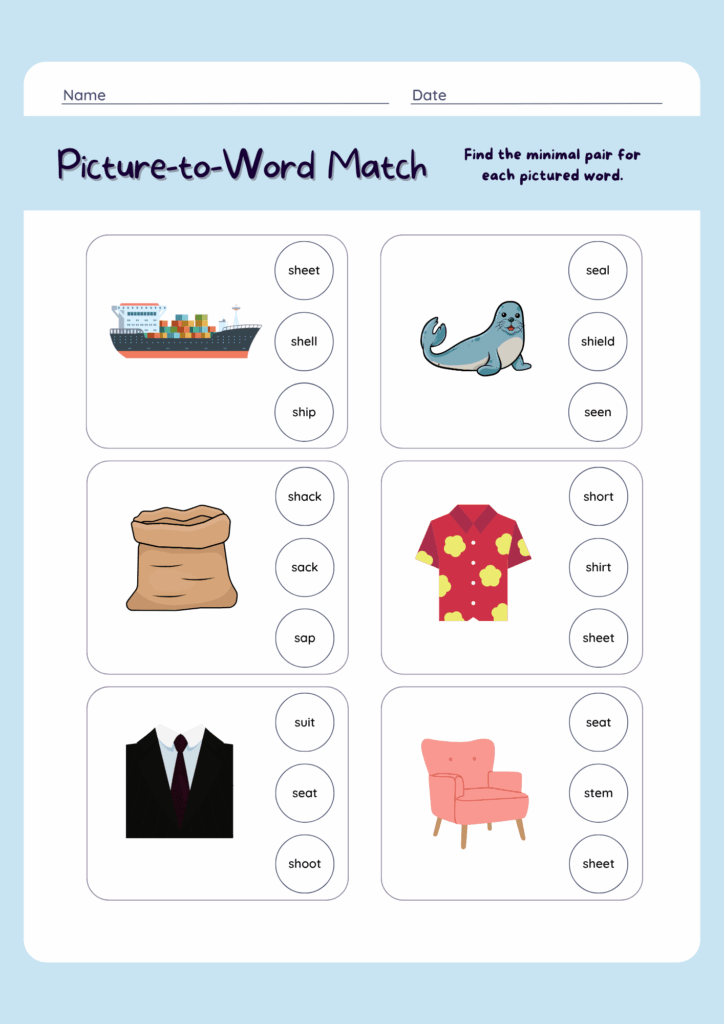
Students match images to correct S or SH words. Pictures show clear objects like “ship,” “sock,” “sheep,” and “sun.”
- Skills learned: Visual association, word recognition, sound differentiation
- Download link:[Worksheet 1 – Picture Match]
2. Minimal Pair Sorting Game
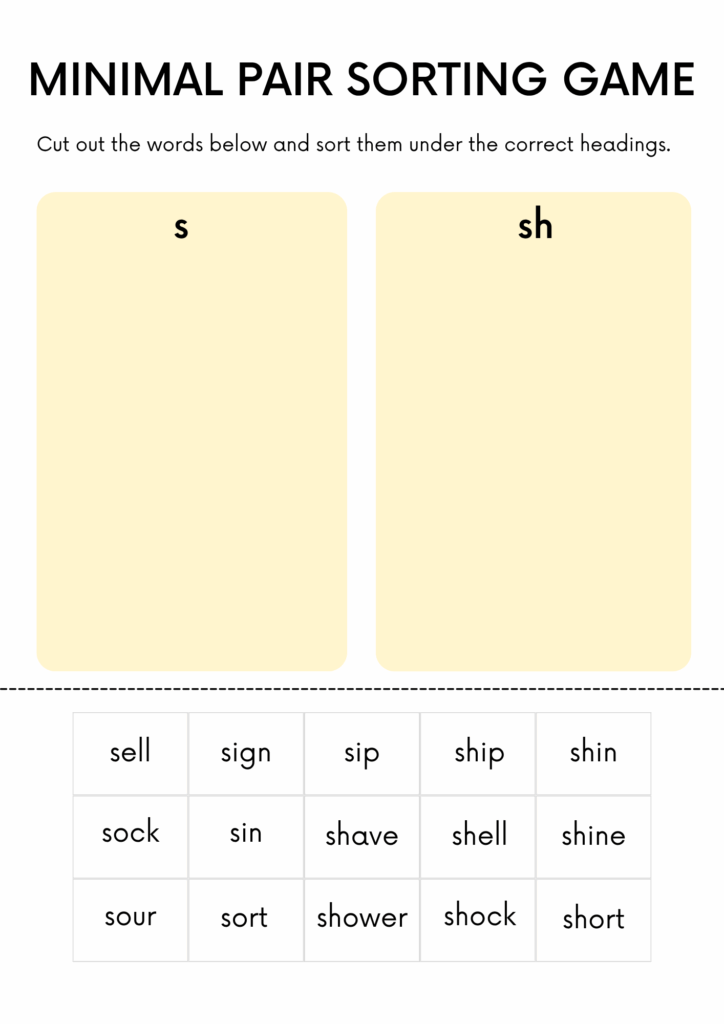
Students physically sort word into S and SH categories. Movement helps reinforce learning through touch and motion.
- Skills learned: Physical memory, categorization, hands-on practice
- Download link:[Worksheet 2 – Sorting Game]
3. Fill-in-the-Blank Sentences
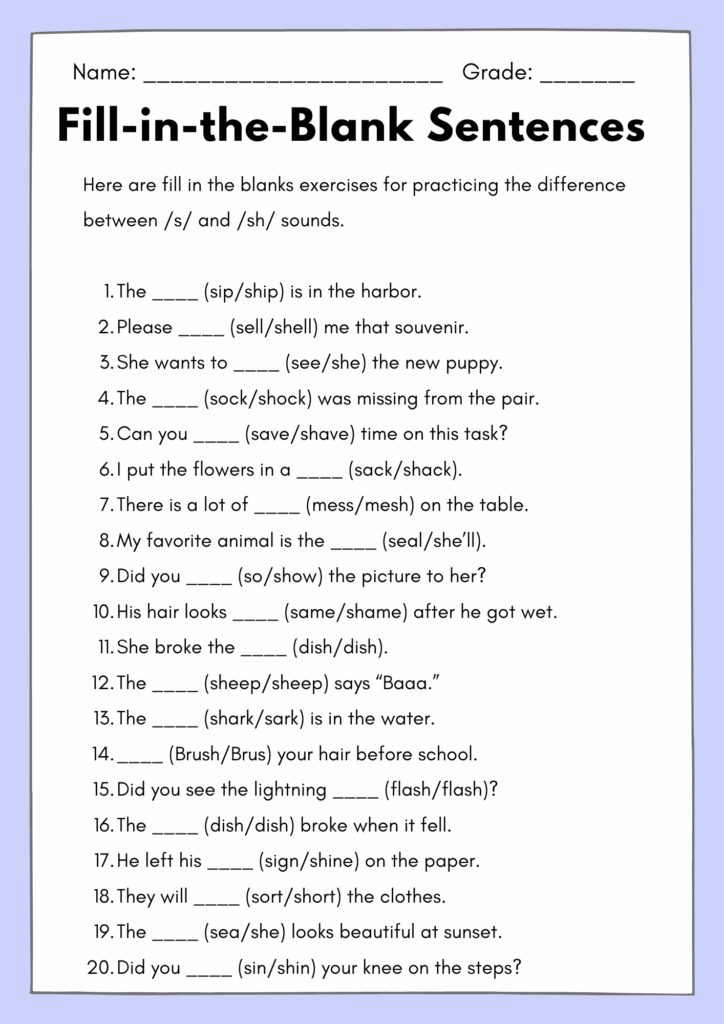
Complete sentences using correct S or SH words. Context clues help students choose appropriate words for meaning.
- Skills learned: Context understanding, sentence completion, practical application
- Download link:[Worksheet 3 – Fill Blanks]
4. Minimal Pair Bingo
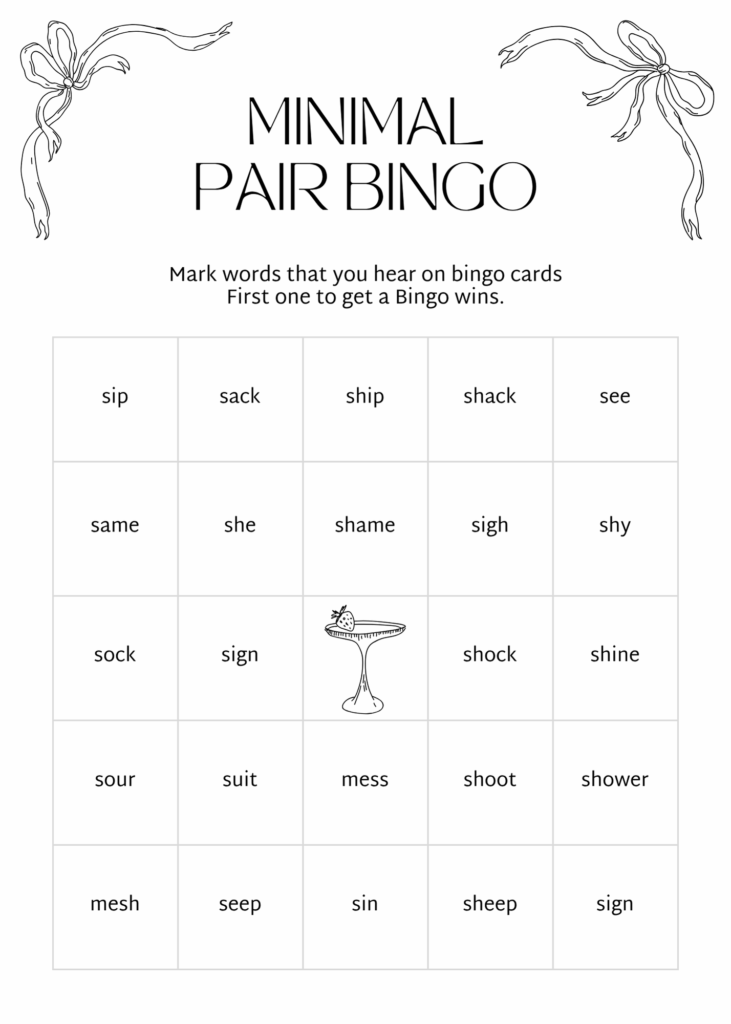
Players mark words they hear on bingo cards. This group activity makes pronunciation practice social and enjoyable.
- Skills learned: Group interaction, listening focus, competitive motivation
- Download link:[Worksheet 4 – Bingo Game]
5. Story Completion with S/SH Words
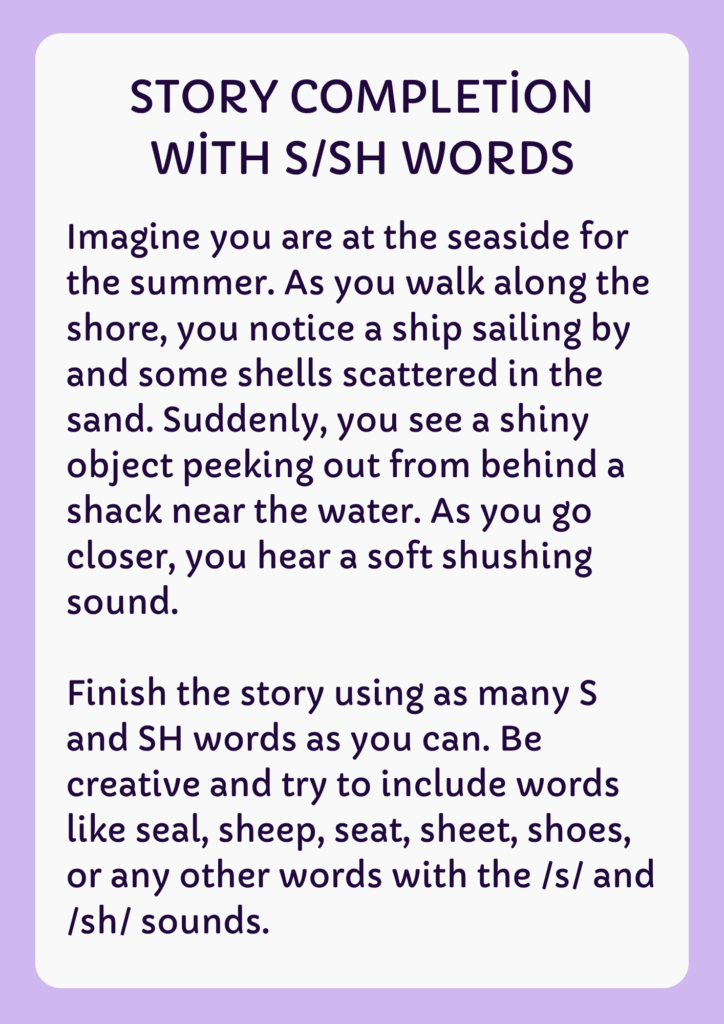
Students finish stories using target words. Creative writing combines imagination with pronunciation practice.
- Skills learned: Creative thinking, story building, natural word usage
- Download link:[Worksheet 5 – Story Completion]
6. Reading Comprehension with S/SH Words
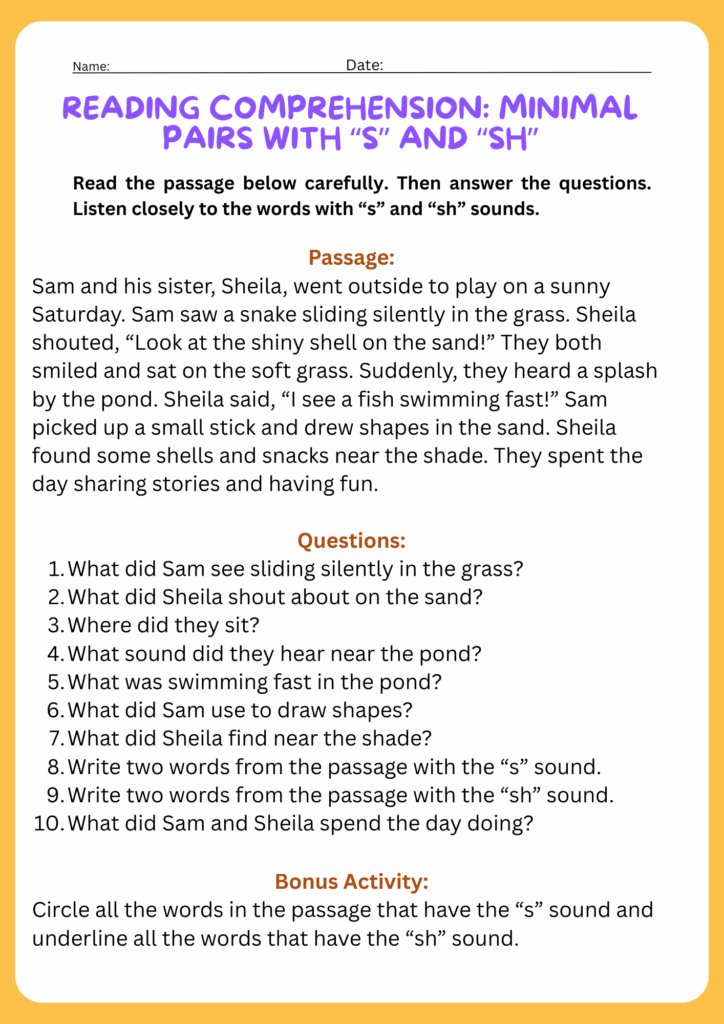
Students read a short story that emphasizes the “s” and “sh” sounds, then answer comprehension questions to reinforce their listening and reading skills.
- Skills learned: Phonemic awareness, listening discrimination, vocabulary building, and reading comprehension.
- Download link:[Worksheet 6 – Reading Comprehension]
7. Tongue Twister Practice with S/SH Sounds
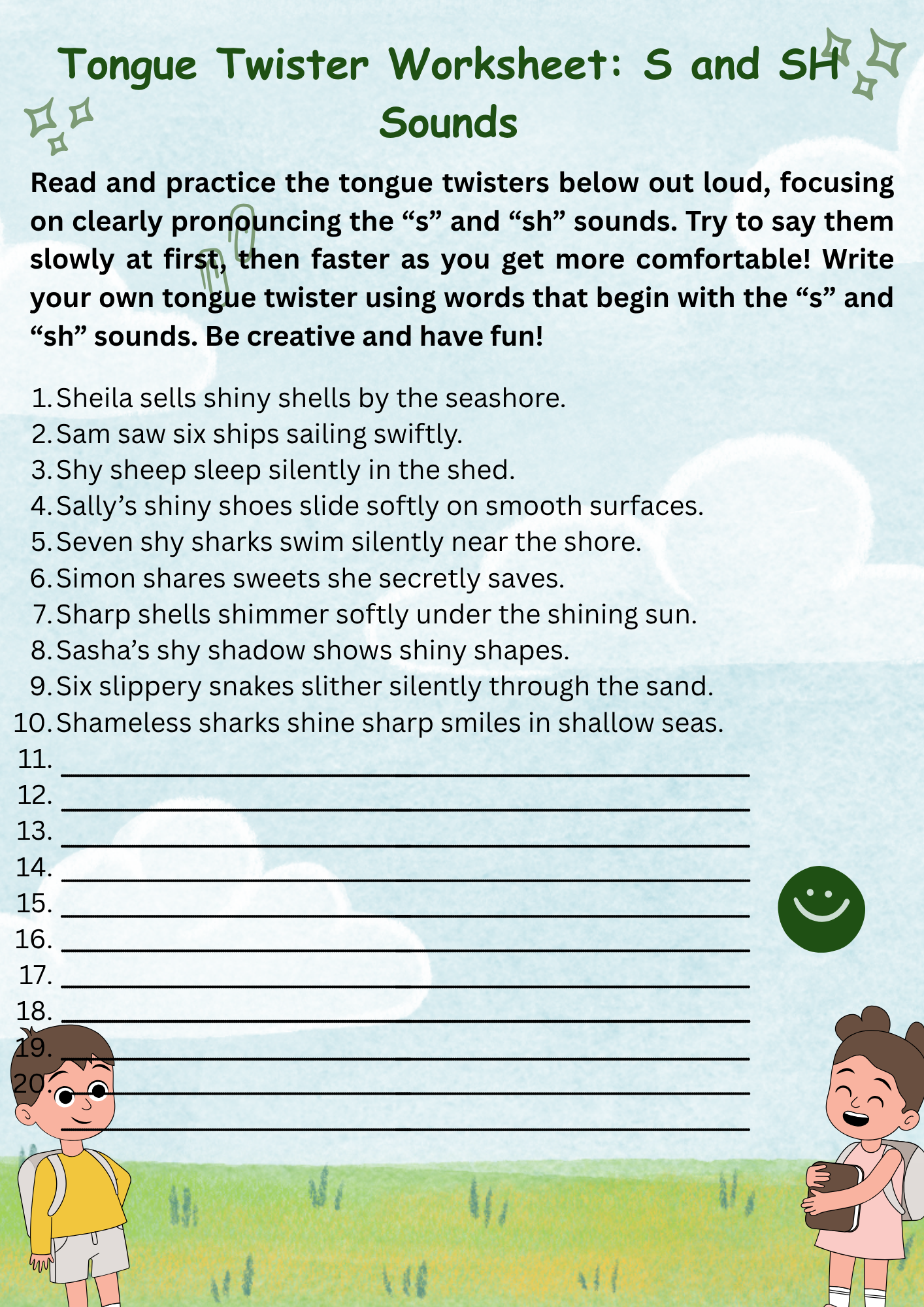
Students read and practice tongue twisters focusing on the “s” and “sh” minimal pairs to improve pronunciation, fluency, and sound discrimination.
- Skills learned: Pronunciation, phonemic awareness, speech clarity, and oral fluency.
- Download link:[Worksheet 7 – Tongue Twister Practice with S/SH Sounds]
Common Mistakes Learners Make with S and SH
- Using the same tongue position for both sounds leads to unclear articulation.
- Not rounding the lips for the SH sound, making it sound too sharp or hissy
- Over-exaggerating the SH sound, which makes it sound unnatural in fast speech
- Mixing up S and SH at the beginning of words (e.g., saying “ship” instead of “sip”)
- Failing to distinguish the sounds in the middle or end of words (e.g., “masher” vs. “massive”)
- Ignoring the difference during fast or casual speech, causing repeated misunderstandings
- Relying only on spelling rather than listening to how words are pronounced
- Forgetting to adjust lip and tongue placement when switching between sounds in conversation
- Practicing in isolation but not applying correct pronunciation in full sentences
- Assuming native-like grammar guarantees clear pronunciation and skipping sound drills
Conclusion
Mastering the s and sh minimal pairs opens doors to confident English communication. These small sound differences make huge impacts on how others understand you.
Clear pronunciation builds trust in conversations and reduces frustrating misunderstandings. The five worksheets give you practical tools to practice right now. Start with the Picture-to-
Record yourself saying “sip” and “ship” before you start practicing. Then record again after one week of worksheet practice. You’ll hear the improvement yourself. Your clearer pronunciation starts with that first download click.
Take action today, your future conversations will thank you.


